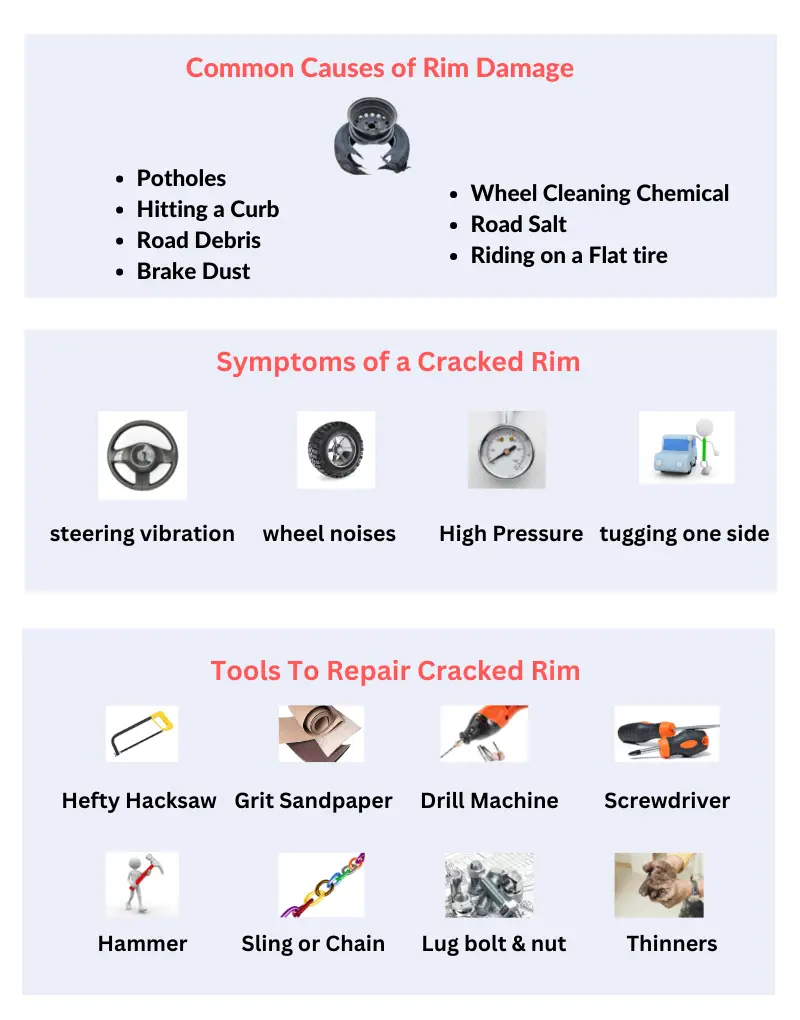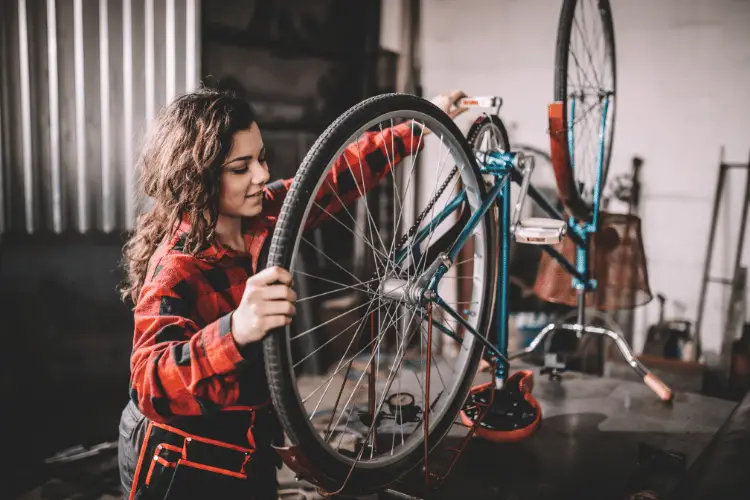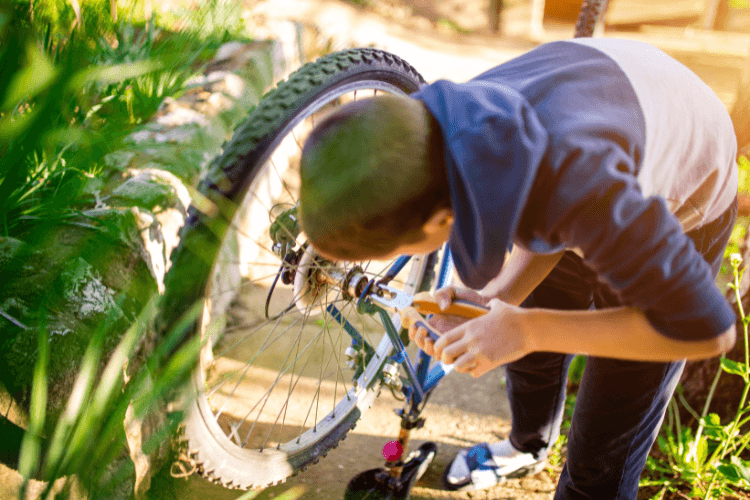Yes, it is worth fixing a cracked rim. You should note that not all rim cracks are the same. Therefore, purchasing a new rim can sometimes be cheaper and safer than fixing a cracked rim.
There are a few different methods of repairing a cracked rim, but welding is the most commonly used method. If done correctly and safely, there should be no issue with using a previously cracked rim.
Before you decide whether to fix or replace your cracked rim, there are several factors to consider.
In this article, we go into the nitty gritty of cracked wheels.
Let’s get to it.

Share It with Credit
<img src="https://bikesadvisor.com/wp-content/uploads/2022/11/Fixing-A-Cracked-Rim-Infograph.png">
<strong>Photo Credit : </strong><a href="https://bikesadvisor.com/">BikesAdvisor.com</a>Is It Safe To Drive With a Cracked Rim?
No, it is not safe to drive on a cracked rim. Therefore, you should avoid doing so.
Extensive cracks in a rim can be extremely dangerous. They can suddenly cause the air inside your tire to escape, causing a blowout.
With a small crack, you might be tempted to think it’s safe to drive it for a while, even if the tire hasn’t lost air.
However, the tire will eventually lose air. And when this happens, it can lead to a blowout which can pose a great danger to yourself and other road users.
Common Causes of Rim Damage
There are many causes of your bike rim damage.

The major causes are listed below:
1. Potholes
When you think about the common causes of rim damage, the first thing that comes to mind is potholes. The roads in most cities and towns have potholes.
Potholes can cause major damage to the wheels of drivers and riders who aren’t paying attention to their surroundings.
The extent of damage done depends partly on the force of the impact and the angle at which your wheels contact the pothole. Inspect your rims and wheels thoroughly after hitting a big pothole.
2. Hitting a Curb
Another common cause of cracked rims is hitting a curb.
The speed at which you hit a curb to a significant extent can determine the severity of the impact on your rim.
If your wheel happens to scrape against the curb, you might just notice a scratch or scuff mark.
However, hitting a curb at high speed can result in cracks in your rims.
3. Road Debris
Many materials and objects in your path can pose a significant risk to your rims. For example, some roads are littered with debris that can scratch, crack or even bend your wheels.
Also, your rims can be struck by road debris resulting in small hairline cracks or even larger ones.
4. Brake Dust
When you apply the brakes, fine brake dust will be deposited on your rims. If left unchecked, brake dust can cause irreversible corrosive damage to your alloy wheels.
Cleaning the wheels regularly helps avoid deterioration, but if the problem is severe, you will need to refinish them.
5. Riding on a Flat tire
Driving with a flat or underinflated tire poses a substantial risk to your rims. A tire protects the rims of your wheels from harm.
A flat tire eliminates this barrier, and you risk ending up with a cracked or bent wheel. If your tire goes flat, you should pull over as soon as it is safe.
6. Wheel Cleaning Products
Wheels accumulate a layer of grime, filth, and grit over time. However, while cleaning chemicals are efficient for keeping your rims clean, they can also cause corrosion over time.
So use products made exclusively for alloy rims.
7. Road Salt
On a winter road, salted roads are a lovely sight, but they can create a lot of difficulties for your wheels.
Salt deposits on your rims will slowly cause corrosion resulting in scuffs. Salt deposits can be removed by washing off the salt.
Symptoms of a Cracked Rim
It is easy to recognize the red flags that indicate a cracked rim.
A few symptoms are listed below:
- Having the sensation of constant vibrating via the steering wheel.
- In certain circumstances, it may seem as though there are different noises on the wheel.
- Another common indicator is that your tires cannot maintain their pressure for an extended period.
- Last but not least, your car is tugging to one side.
Should You Repair A Cracked Rim?
Deciding whether or not to repair a cracked wheel depends on many factors.
You must thoroughly inspect the entire wheel to ensure that you are fully aware of its condition.
Your objective is to inspect the wheel and determine whether or not you should fix it. Remember, you can get a professional assessment.
Here are some situations where you can’t fix a cracked rim:
- Rim with numerous cracks
- Rim has been repaired before.
- If it is a large crack.
- The cracks extend in several directions.
Are Rims Worth Repairing?
Yes, damaged rims are worth repairing. Scratches are easy to fix and, in most instances, will not cost too much. However, bending metal back requires specialized tools, which may increase the cost.

In most cases, repairing your alloy wheels is a more cost-effective option than having to replace them. This is especially true when only a few minor dents or scratches can be easily fixed.
Your mechanic should have the tools and the expertise to bend rims back into shape or even fill up small fractures in the wheels.
What if the damage is more extensive? In case of multiple cracks or missing parts, replacing the rim might be cheaper and safer.
Which Tools Do You Need To Repair A Cracked Rim?
You can approach and effectively tackle any problem with the appropriate tools and expertise. Gather these tools if you are sure your rim can be fixed.
You will need a list of tools :
- Hefty hacksaw
- File
- 320, 80, and 100-grit sandpaper
- WD-40
- Thinners
- a dark marking
- drilling bits
- screwdriver, hammer, or chisel
- Sanding belt
- 1.52mm alloy rod and 150 amps TLG welder with a 5–10% magnesium content
- sling or chain
- lug bolt and nut
How To Repair A Cracked Rim?
As soon as you discover that the rim of the wheel has a crack, you should immediately do the following four steps:
- Assess the rim to see if it can be fixed.
- Get all of your materials and tools.
- The next step is to clean the area of the crack
- Locate the point where the crack ends and then drill a hole.
- Do the same on the opposite side
- Break up the surface of the rim
- Coat with rough paper.
- Preheat the rim with a hot wash is the first step to
- Now, use a blow torch and weld the fractured points together
How To Tell If A Cracked Rim Can Be Repaired?
You can use the following three criteria to decide whether to replace or weld a cracked wheel:

1. Location of Crack
A crack on the back or inboard side of the wheel is simple to fix. It is not suggested to weld if there is a crack on the front face or inside of the barrel because this could damage the wheel’s structural integrity.
Most of the time, cracks that develop close to the lug area and the base of the spoke cannot be repaired.
2. Direction of Crack
Soldering a crack that runs perpendicular to the spin direction is not advisable. That is because the weld is likely to grow progressively wider over time.
3. Knowledge of Welding
TIG (Tungsten Inert Gas) welding is required for aluminum alloy rims because it prevents welding region burn-off. Make sure a qualified expert carries out the procedure.
